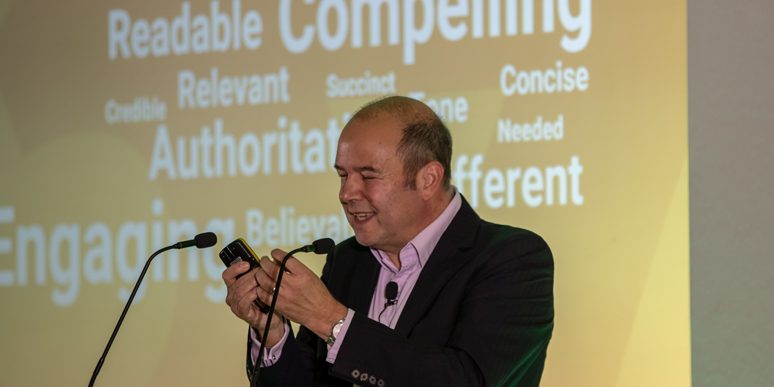At GatorCon 2018, we were lucky to hear from Charles Abel, a veteran journalist content editor with Thirty Seven. Charles shared his insights into how journalists build a great story. There was a lot that marketers can use in their own efforts, so we’ve condensed his key takeaways into blog form.
T.R.U.T.H.
Do you ever get gripped by a story about a topic you’ve never before given a second thought to? It turns out the topic itself is unimportant. All good stories are rooted in the T.R.U.T.H.: they are Topical, Relevant, and Unusual, and they contain Trouble and Human interest.
Making your content topical and relevant allows your audience to see how it relates to them. While being widely-read is never a bad thing, in the context of a workday you have to be selective. If you’re up against a deadline for a campaign about changes to Twitter’s algorithm, you won’t stop to read about the Liberal Democrat party’s leadership race.
That said, interesting stories are unusual. “Dog Bites Man” is not unusual, “Man Bites Dog” is. You need to grab attention, either with a new subject or with a new angle on it.
Background vs Essence
A quote often attributed to Albert Einstein goes, “If I have an hour to solve a problem, I spend 55 minutes thinking about the problem, and 5 minutes thinking about the answer”. When I’m working on a new blog, I spend more time reading around the topic than I take to write the actual text. The context of a story is very important, but it isn’t the story by itself. Background research is the foundation of the building; it forms the base from which you can capture the essence of the story.
The trope that you have your best ideas in the shower really is true! The essence of the story, the hook which makes it readable, comes from reflecting on the mass of background research. Once you have read and absorbed all the background of the event or idea that you want to write about, the question to ask is “Who cares?” Why does this topic matter to your audience?
Handling the Creative Process
As well as the nuts and bolts of content, the question of process came up. The balance of reacting quickly to events with topical content, versus a sensible sign-off process, is tricky to handle.
Charles’ advice was to have pre-approval for content. As long as the content conveys the central message, the specifics of vocabulary and grammar should be left to the writer. Whenever you have more than one person reviewing the content, you’ll have differences of opinion. “I would word it like this…” isn’t really useful feedback, just a clash of individual writing styles.
Content review tools like Hemingway and Grammarly are well known to content marketers everywhere. Do journalists also use them? Not much, according to Charles. His preferred method for reviewing content is to read it out loud and ask other humans to read it. You’re writing for humans, so if they struggle to read it, all the automated tools in the world are no good.
That said, Charles stands by Reading Age scores. Making content accessible to your audience is rule one of writing.
Putting it into Practice
Who doesn’t love a round of audience participation? The GatorCon audience was given a handful of topics and challenged to produce a headline which met all the criteria.
The winner was “Trump Blows Jeff”, on the story of Donald Trump firing US Attorney General Jeff Sessions. Human interest and Trouble dominate this headline, although perhaps the R, in this case, is for Risque rather than Relevant!
Applying these lessons to your content
Charles’ session was a powerful reminder that marketing can draw lessons from all sorts of other fields.
Due to the positive feedback on Charles’ keynote, we’ve been hosting copywriting masterclasses with Thirty Seven regularly since conference. Keep an eye on our events page for the next one!







